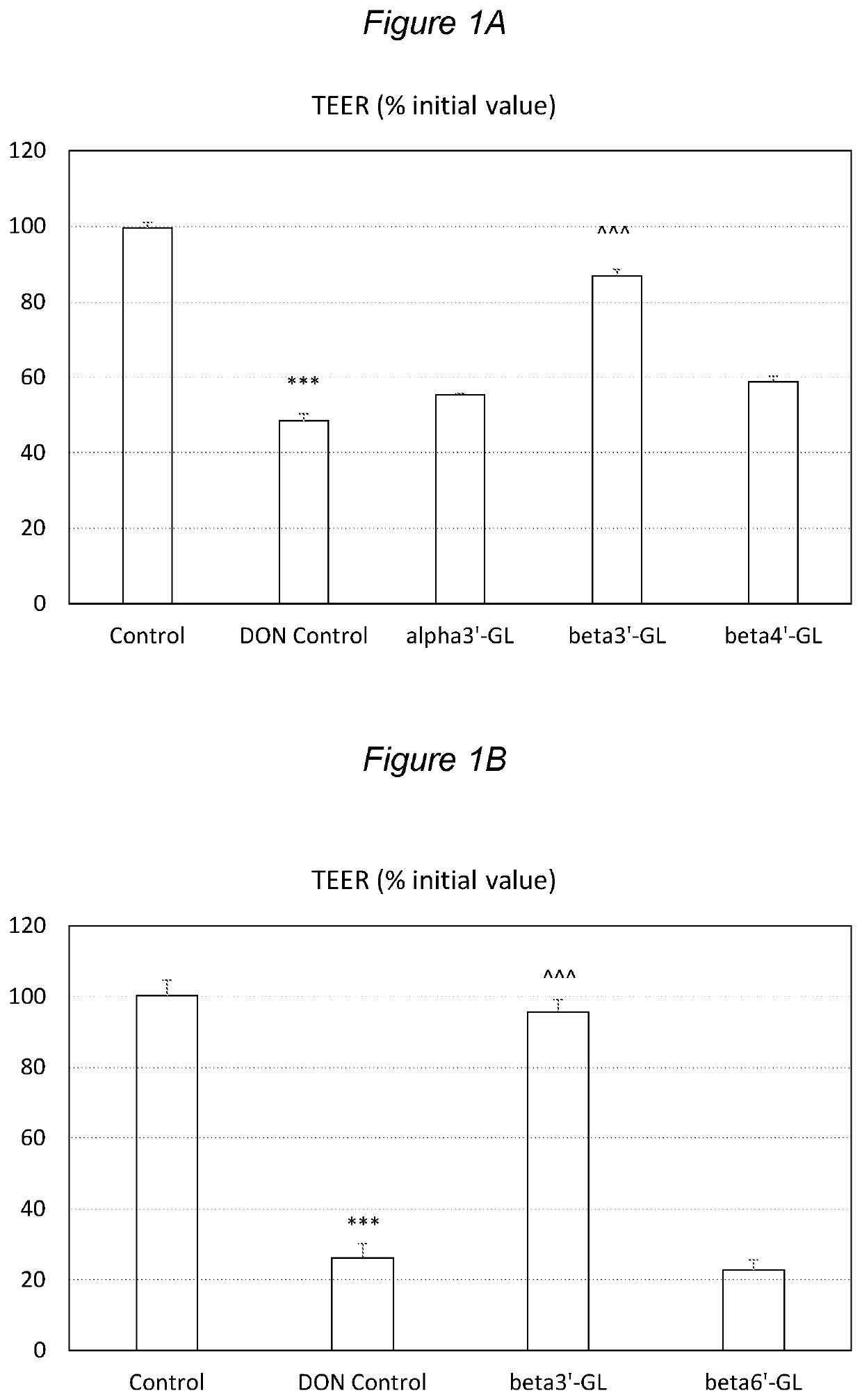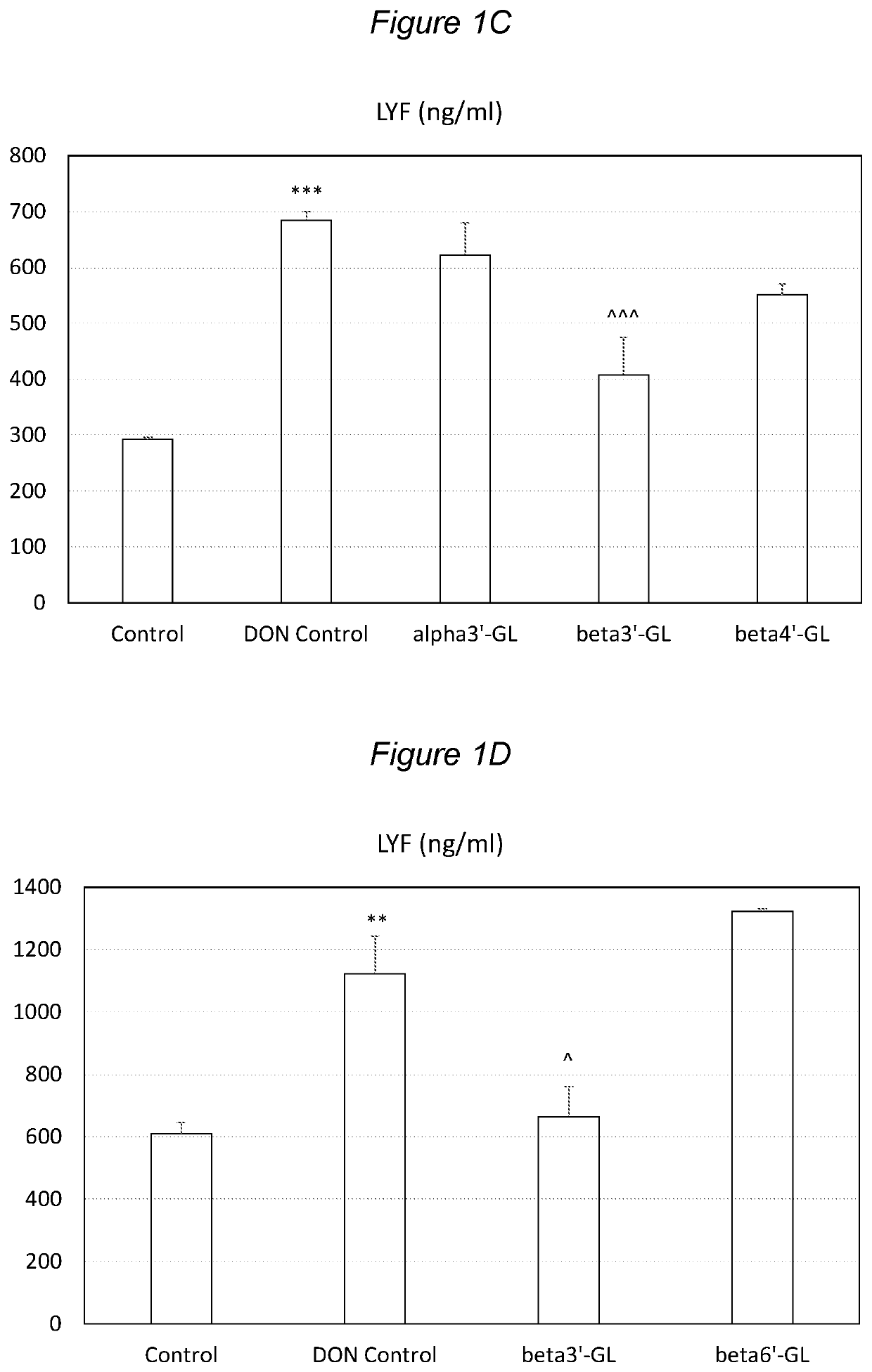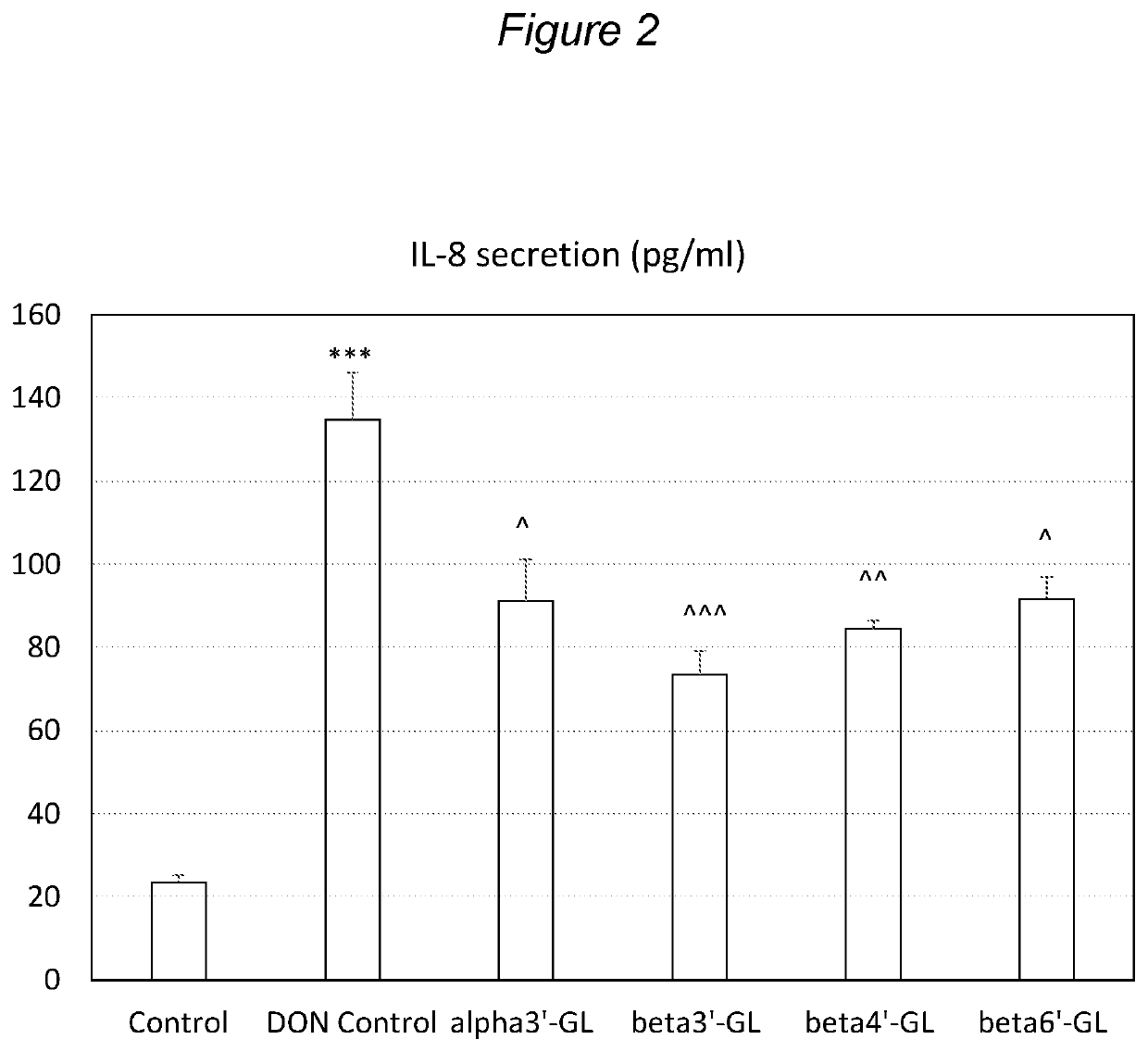Nutritional composition comprising 2'fucosyllactose and 3'galactosyllactose
a technology of galactosyllactose and fucosyllactose, which is applied in the field of infant and young child formula and the improvement of intestinal health, can solve the problems of not always being able or desirable to breastfeed an infant, and achieve the effect of improving the intestinal barrier function and improving the intestinal microbiota
- Summary
- Abstract
- Description
- Claims
- Application Information
AI Technical Summary
Benefits of technology
Problems solved by technology
Method used
Image
Examples
example 1
rmula with 2′-FL and Dietary Butyrate Improve Intestinal Alkaline Phosphatase Expression
[0115]Two infant formulae were subjected to an in vitro digestion step and after the in vitro digestion step the effect on intestinal barrier maturation was examined, in particular the maturation of alkaline phosphate (AP). AP is an intestinal enzyme that is expressed and secreted by enterocytes and used as differentiation marker. AP plays a pivotal role in intestinal homeostasis and innate immune defense by dephosphorylating harmful substances such as microbial ligand lipopolysaccharide (endotoxin).
[0116]The control infant formula was a non-fermented infant formula supplemented with non-digestible oligosaccharides (scGos / lcFOS) in an amount of 0.8 mg / 100 ml when in ready to drink form. The scGOS being derived from Vivinal GOS and the lcFOS being derived from RaftilineHP. The fat component being mainly vegetable oils, fish oil and microbial oil (source of arachidonic acid). The amount of butyric ...
example 2
Infant Formula with 2′-FL and 3′-GL Improve Intestinal Lactase Expression and Cell Proliferation
[0121]The nutritional compositions of example 1 were tested in a similar experiment as example 1. Instead of 13.7, 13.6% (w / v) of the formula was used. Instead of lipase from Rhizopus oryzae, rabbit lipase was used at 16.6 mg / ml (Germ, REG.340) in the gastric phase. During the intestinal phase, 0.06 mg / ml pancreatic Lipase from porcine pancreas (SIGMA, L0382), and 3.5 mg / ml porcine pancreatic lipase (SIGMA L0126) was used instead of 0.09 mg / ml pancreatic Lipase from porcine pancreas (SIGMA, L0382).
[0122]Lactase activity was measured by mixing 30 μl of cell lysate with 30 μl assay buffer (maleic acid 0.625 M, lactose 0.12 M, pH 6.0) and incubated at 37° C. for 4 hours, the resulting glucose was quantified. Lactase activity was expressed as μmol glucose / min / mg.
[0123]It was found that the lactase activity was significantly increased when cells were treated with the predigested experimental t...
example 3
Galactosyllactose and 2′Fucosyllactose Protects Against Intestinal Barrier Disruption and Prevents Permeability Increase
[0128]Beta1,3′-galactosyl-lactose (beta3′-GL), beta1,4′-galactosyllactose (beta4′-GL) and beta1,6′-galactosyl-lactose (beta6′-GL) were obtained from Carbosynth (Berkshire, UK). Alpha1,3′-galactosyl-lactose (alpha3′-GL) was obtained from Elicityl (Crolles, France). Purified deoxydivalenol (DON) (D0156; Sigma Aldrich, St Luis, Mo., USA) was dissolved in pure ethanol and stored at −20° C. Human epithelial colorectal adenocarcinoma (Caco-2) cells were obtained from American Type Tissue Collection (Code HTB-37) (Manasse, Va., USA, passage 90-102).
[0129]Caco-2 cells were used according to established methods. In brief: cells were cultured in Dulbecco's modified Eagle medium (DMEM) and seeded at a density of 0.3×105 cells into 0.3 cm2 high pore density (0.4 μm) inserts with a polyethylene terephthalate membrane (BD Biosciences, Franklin Lakes, N.J., USA) placed in a 24-we...
PUM
| Property | Measurement | Unit |
|---|---|---|
| weight ratio | aaaaa | aaaaa |
| wt. % | aaaaa | aaaaa |
| weight | aaaaa | aaaaa |
Abstract
Description
Claims
Application Information
 Login to View More
Login to View More - R&D
- Intellectual Property
- Life Sciences
- Materials
- Tech Scout
- Unparalleled Data Quality
- Higher Quality Content
- 60% Fewer Hallucinations
Browse by: Latest US Patents, China's latest patents, Technical Efficacy Thesaurus, Application Domain, Technology Topic, Popular Technical Reports.
© 2025 PatSnap. All rights reserved.Legal|Privacy policy|Modern Slavery Act Transparency Statement|Sitemap|About US| Contact US: help@patsnap.com



